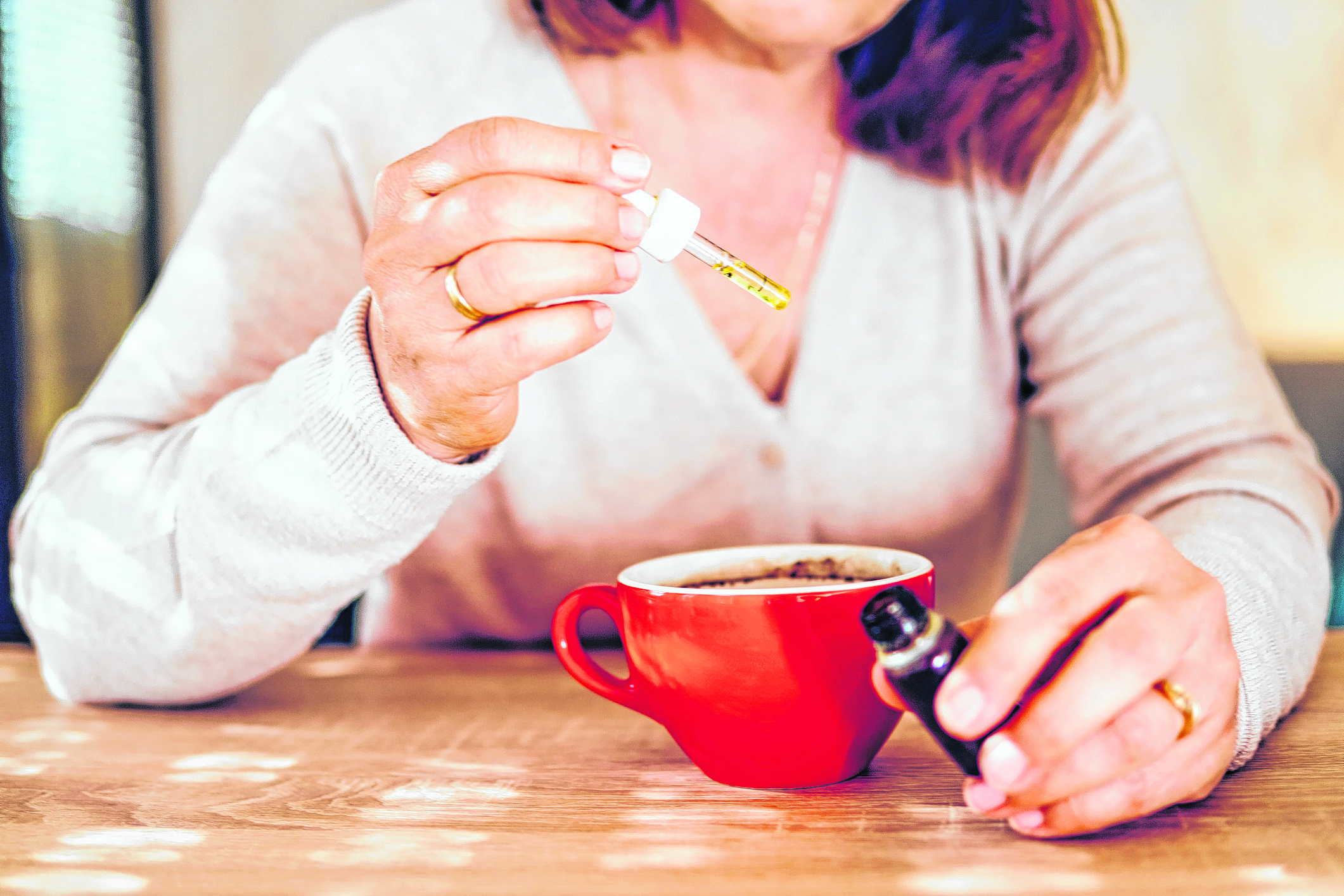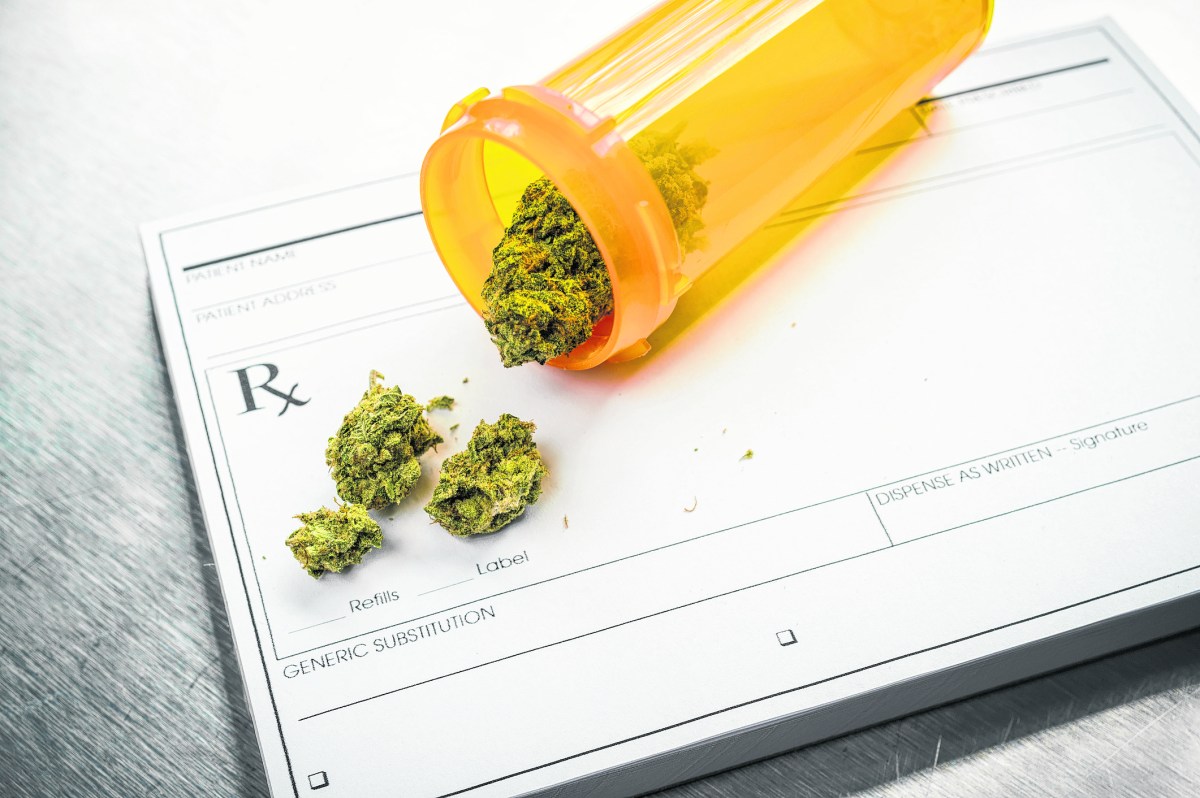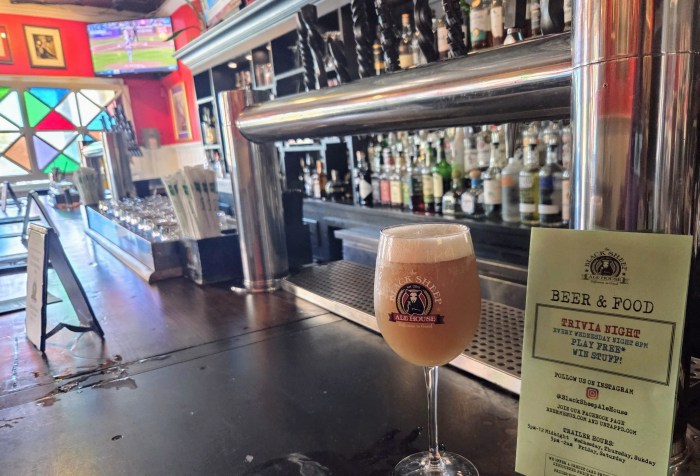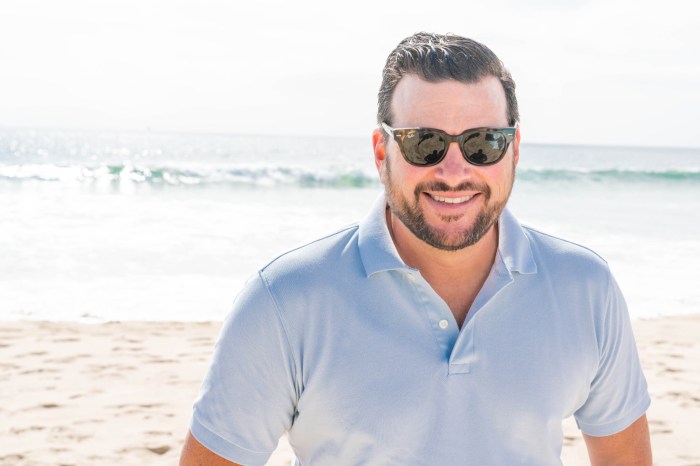More Long Island Seniors Turn To Medical Marijuana For Pain Relief
People traditionally associate marijuana with teenagers, but the plant is seeing a surge in usage among older adults.
Senior citizens are the fastest-growing demographic to use cannabis, according to the National Survey of Drug Use and Health’s annual report. About 32% of those 65 and older reported cannabis consumption in 2019, compared to just 11% in 2009.
With less stigmatization and more accessibility, Long Island’s older-than-60 crowd is tapping into marijuana’s medicinal benefits. Dr. Diana Martins-Welch, the director of supportive oncology at Northwell Health’s Monter Cancer Center, says more seniors are open to incorporating cannabis into their medical care.
“So many of them are having their adult children or their grandkids or even just friends in the senior center talk about it,” said Martins-Welch, who runs Northwell’s Medicinal Cannabis Workgroup. “They actually come in now with a lot more background.”
Dr. Abby Aronowitz, 66, is one patient who heard about cannabis’ medicinal benefits. The Huntington resident had been suffering “tremendous pain” in her hips, back, and shoulders. Various treatments — including physical therapy, lidocaine, Voltaren gel, and rest — didn’t work.
Once Aronowitiz started her medical marijuana prescription, it didn’t directly improve her orthopedic pain, but it did lessen her suffering.
“It gets me into a different head space and it distracts me,” Aronowitz said. The marijuana allows her to focus on hobbies she enjoys.
“I’ll sit down and play piano, my mind is off my pain,” Aronowitz said.
While she found that it wasn’t a cure-all for her orthopedic issues, Aronowitz was surprised to find relief for a different ailment.
“Believe it or not, it has really helped me with irritable bowel syndrome,” Aronowitz said. “This was a very unexpected benefit.”
She said she uses a 1:1 CBD:THC ratio vape to alleviate her IBS symptoms without feeling stoned or anxious.
“I will use the higher THC to CBD [products] when I need it for distraction,” Aronowitz said.
Martins-Welch started prescribing medical marijuana in 2016 when New York State’s program went live.
“It just made sense,” Martins-Welch said. “So many patients with cancer we know benefit from cannabis.”
She said that it’s helpful in managing symptoms besides cancer, such as Parkinson’s disease, multiple sclerosis, amyotrophic lateral sclerosis (ALS), and seizure disorders.
Dr. John Shallat has seen a 100% success rate for treating his patients’ insomnia with medical cannabis, which is a major reason seniors come to him. Studies show that up to 48% of older adults deal with insomnia symptoms. Shallat owns Blue Calm Doctors, a Huntington-based practice focused on personalized medical marijuana care.
Many of his older clients use the drug for anxiety and for chronic pain.
Martins-Welch notes that CBD — or a CBD-THC combination — can be very helpful for conditions such as rheumatoid arthritis or osteoarthritis of the joints, common ailments for older folks.
Gail Zanchelli, 62, began using medical marijuana last August after dealing with long-term pain in her tailbone.
“I was living on Advil for years, it just never went away,” Zanchelli, of Deer Park, said.
Before trying medical cannabis, Zanchelli tried out various injections and anti-inflammatory medications. She’s especially sensitive to most medicines, she said, so those treatments came with additional issues.
“Everything they gave me, I got very sick, my body blew up, my legs blew up,” Zanchelli said. “And of course, the pain didn’t go away.”
That changed when she got her medical card (medical examiner certificate). She tried gummies and tincture drops before landing on capsules as her preferred method.

“It lasts me 24 hours and I take it again when I go to bed,” Zanchelli said. “I [have] no pain. I am not on Advil anymore.”
Cutting down on other medications can be a major draw for senior patients.
“I’ve had countless patients come off or lower their usage of opioids with the help of cannabis,” Martins-Welch said.
Still, she doesn’t preach medical marijuana as a panacea for relieving cancer patients’ pain.
“Sometimes you find that people get tolerant and it’s just not enough,” Martins-Welch said. Seniors using marijuana for medical reasons may have prior experience using it recreationally.
“A lot of patients will talk about their history of use which could date back to the ‘60s or ‘70s,” Martins-Welch said.
But even if someone has cannabis experience from decades ago, it doesn’t mean they’re knowledgeable about modern strains.
“This is not the cannabis of yesteryear,” Martins-Welch said.
One of the main points that both Shallat and Martins-Welch address right off the bat with new patients is how potency is much different today. Shallat advises patients to “start low, go slow.”
Both the doctors are fans of medical cannabis tinctures that come in droppers. These doses allow physicians to “really treat it like a medicine,” according to Martins-Welch.
“We can do it in really small, controlled increments when we’re doing it with liquid,” Martins-Welch said. “Whereas everyone out there now is experimenting with gummies and I think it’s a disaster — especially for my elderly patients.”
Aronowitz prefers vaping because it provides immediate relief.
“I don’t do edibles at all because, number one, I feel like I need to be in control and I never know when it’s going to hit or how long it’s going to last,” Aronowitz said.
While Shallat likes the fact that edibles can be measured out and cut up into smaller pieces, Martins-Welch tends to avoid them.
“I tell people stay away from the gummies because it’s easier to overdose on it and then it stays in your system a long time,” Martins-Welch said.
Her caution is justified. Emergency room visits for seniors related to marijuana usage are up both nationally and locally.
Dr. Sanjay Gupta, the chairperson of emergency medicine at South Shore University Hospital, says he’s seen an increase in edible use among emergency room patients lately. About 5%t of senior patients’ visits to Northwell emergency rooms have been cannabis-related over the past two and half years.
“I’ve seen higher numbers coming in probably in the past five years than I had ever seen previously,” said Gupta, who has been practicing emergency medicine in the greater New York City area since 2000.
Gupta thinks these visits correlate with THC concentration increases, along with how older patients’ bodies process cannabis.
“They might have an expectation of how their body’s going to react, but it’s going to be completely different because they’re more sensitive at their age,” Gupta said, noting that seniors are often on various medications that could negatively interact with cannabis.
Marijuana can slow reaction time, which puts seniors more at risk for injuries, especially falls. They are also seniors coming into the ER with altered mental states.
“That might be slowing, might be confusion, might even be paranoia, delusions,” Gupta said. “We see plenty of that increased sleepiness.”
South Shore University Hospital has also seen an uptick in abdominal pain, nausea, and vomiting related to cannabis use.
“This is something we probably have to monitor going forward, as dispensaries and the ease of obtaining recreational use marijuana is going to become a little bit more universal,” Gupta said.
Gupta said that if primary care physicians get more comfortable talking to patients about cannabis consumption, some of these ER visits could be avoided.
“I think this is gonna be easier to do as dispensaries are open and [patients are] not purchasing or growing [their] own, because then there’ll be a little bit more quality control on THC concentration…I think that’s actually a positive in terms of promoting safety for people,” Gupta said.
Cannabis usage to ease opioid dependence is a theory that begs further investigation. Martins-Welch, who has researched the subject, notes that study results are all over the place within the scientific literature.
“You have some studies that say cannabis doesn’t impact opioid usage and you have others that really do show that there’s a trend in that direction,” Martins-Welch said. “But none of these studies are really high quality.”
In her research, she saw that senior citizens found medical cannabis to be helpful to a certain degree for pains. Some study participants were able to decrease or completely come off previously prescribed opioids.
It’s difficult to do higher-quality studies right now because opioids are much more financially and physically accessible than medical marijuana.
“You can have a patient who is choosing between prescribed oxycodone that they can get from their local CVS and it’s covered by their health insurance, or they can drive to the dispensary that’s located an hour away and pay out of pocket a hundred or so dollars,” Martins-Welch said.
Medical cannabis is an option for patients with addiction history who need painkillers, but may be triggered by taking pills or smoking. One of Martins-Welch’s cancer patients is dealing with debilitating side effects from chemotherapy, including struggling to walk without pain. He also has a history of substance abuse.
“He told me from the very beginning ‘I do not want an opioid. I’m willing to try cannabis, but I won’t ingest it,’” Martins-Welch said. “So he is using cannabis oil mixed in with lidocaine cream.”
He applies it topically to his legs and feet to ease the pain.
“You can’t really attain that sort of pain relief topically with most agents,” Martins-Welch said.
While there’s less resistance to the substance in recent years, Martins-Welch still tries to “read the room” before suggesting cannabis treatments.
“I’ve been hesitant to bring it up in many encounters unless the patient goes there first because I don’t want them to just label me as the pot doc and not want to come back,” Martins-Welch said.
Despite increased acceptance, Martins-Welch thinks that most doctors on Long Island are still reluctant to prescribe cannabis. She notes that many physicians are overwhelmed with work — especially following the pandemic — and don’t have the bandwidth to learn about treatments.
“I’ve had zero oncologists approach me over the last eight years that I’m doing this asking me how they can get involved to write their own certificates,” Martins-Welch said.
Shallat, who’s also a full-time doctor at CityMD, opened Blue Calm Doctors to give medical marijuana patients more knowledge and guidance. He noticed that most places issuing medical cards often don’t provide further instruction.
As marijuana remains stigmatized, affordability continues to be difficult for those who rely on it for medical reasons.
“It’s not cheap,” Zanchelli said. “When I go there I could spend $200 to $300 and that’s a hardship.”
Arononwitz says it’s unfair that medical cannabis isn’t covered by medical insurance: “They’ll pay for narcotics, but they won’t pay for that.”
Pricing may improve as more uses for marijuana are discovered. Early-stage research is seeing promising results about using medical cannabis for dementia patients’ behavioral disturbances, according to Martins-Welch.
“If we have a way to help patients with dementia … making them more calm and more pleasant and happier, I think it would be a breakthrough,” Martins-Welch said.



































